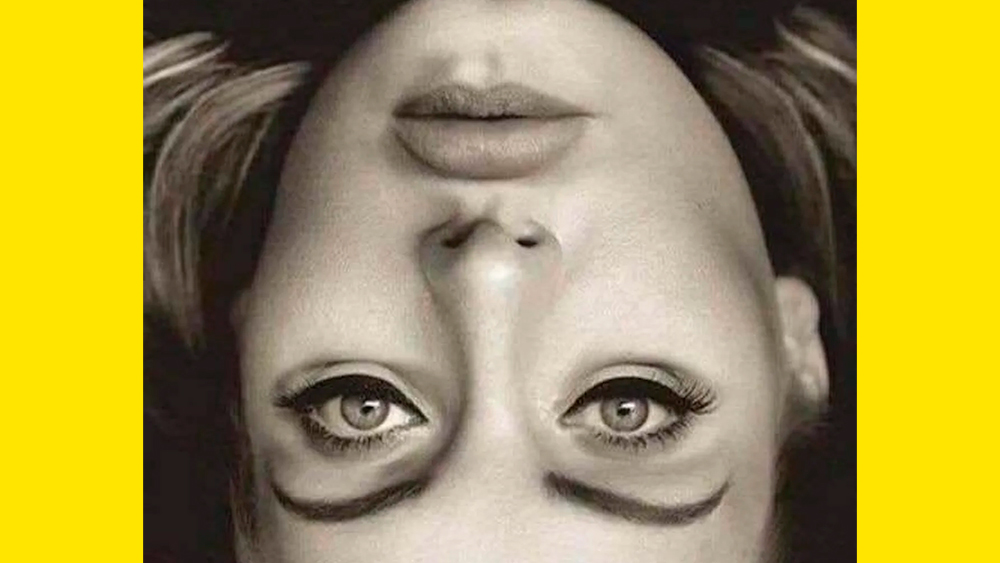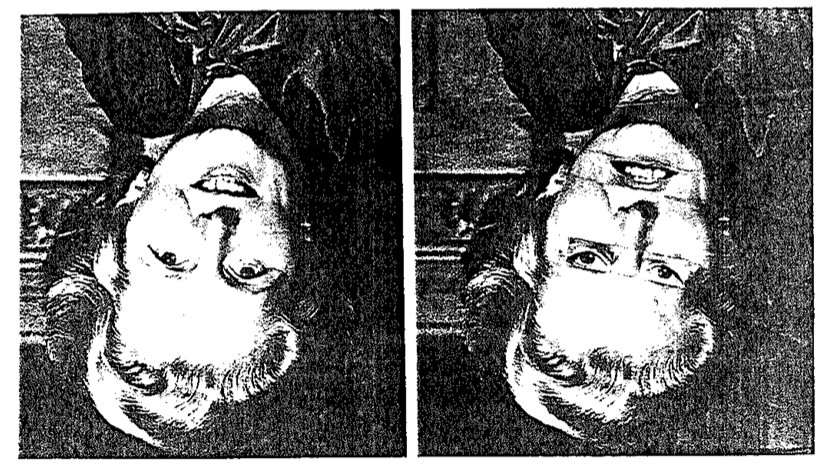
The pop star is Adele is famous for her soulful mezzo-soprano vocals and traditionally crafted songs like Rolling in the Deep. And also for an optical illusion, it turns out. She's the subject of a viral photo that's been bending the internet's mind for years.
The image appears to be simply the portrait photo from the cover of Adele's 2015 album 25 turned upside down. At least that's how it looks, but it's not the original image. Turn it the right way up, and you'll see that it has been edited in a very particular way (see our selection of the best optical illusions of all time for more gems).
Perfectly normal photo of Adele, isn't it? Just turn the picture upside down... Learn about the Thatcher effect or why your brain can't properly process a photo of a face that is upside down: https://t.co/01fPVuuMg9 pic.twitter.com/7c6w5EhAKrJuly 12, 2023
When you flip the picture of Adele, you suddenly discover that the singer's eyes and mouth were the right way up the whole time, despite the rest of the image being upside down. And with the image flipped, now her eyes and mouth are the wrong way around, making the singer now look very strange.
I'm not sure who made the edited version of the shot photograph. It's been knocking around on the internet for at least five years but continues to reappear and go viral all over again. However, the freaky visual trick was discovered even longer ago with a very different subject: the former British prime minister Margaret Thatcher. In fact, the technique is often referred to as the Thatcher Effect for this reason.

Apparently, what happens is that when an image of a face is upside down, our brain finds it difficult to focus on the different elements and detect that anything is wrong with them. Naturally, we're used to seeing faces the right way up. When that's not the case, our brain lazily assumes that it's a normal image that's been flipped. When the image is the right way up, the editing immediately becomes apparent because we're used to reading faces this way and are more attune to nuances.
It was Peter Thompson, a professor of Psychology at York University who demonstrated the bamboozling optical illusion back in 1980. He used it as part of his research into facial recognition, in which he proposed that we process faces on a holistic level instead of by reading individual elements like lips and eyes. You can read more in his article Margaret Thatcher: a new illusion, but now we're rolling in deep science.
For more visual tricks, see our pick of the best recent optical illusions and the incredible optical illusion sculptures made a physician turned artist.







